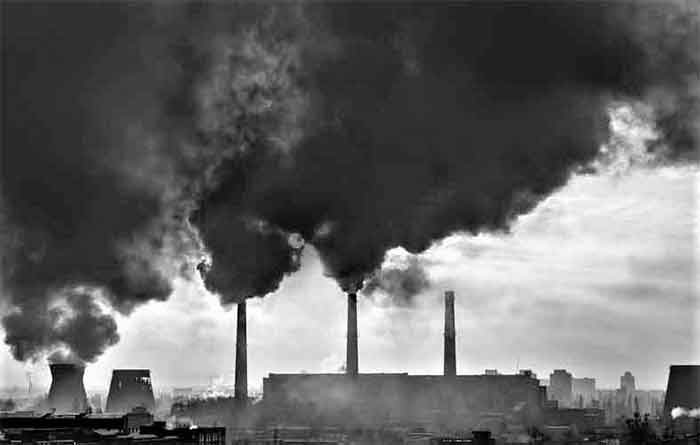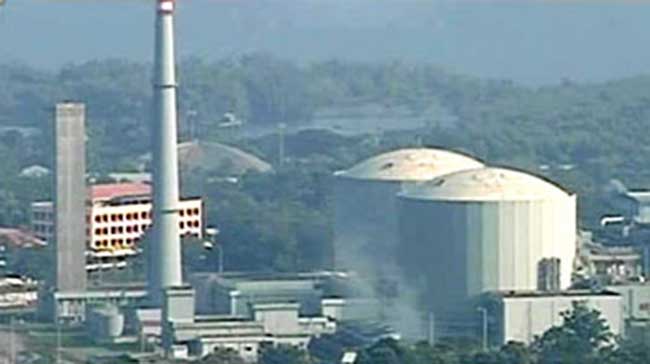Co-Written by Anjali Roy, Ankit Kumar, Anurag Ratan, KS Lakshmi Naraayan, Kaustubh Jain and Sartaj Singh

“Most people are completely, blissfully ignorant about the situation, and those of us who believe in sustainable development are not able to do anything”, this is how Dr SP Udayakumar describes the current situation relating to nuclear power and its uses throughout the world. Dr Udayakumar is a writer and anti-nuclear activist from Tamil Nadu, India. He is the convener of the People’s Movement Against Nuclear Energy (PMANE), which has been at the forefront of the anti-nuclear struggle in Kudankulam, . He also co-founded the South Asian Community Center for Education and Research (SACCER).
Nuclear power has proven to be more bane than boon
He points out that the UN Security Council’s five permanent countries (the P5), which include China, France, Russia, United Kingdom, and the United States, along with Germany as the plus one, must be held accountable to the world about their use of nuclear power, as this source of power is very unstable and gives way to catastrophic results if misused or mishandled. Since a large number of countries are in possession of nuclear arms, a war even between two smaller countries can escalate into nuclear warfare. Even though the number of nuclear warheads might be lesser than what used to be a few decades ago, those that still exist have enough power to wipe out the earth several times over as nuclear technology has advanced multiple times than the warheads that were used in Hiroshima and Nagasaki in 1945. Furthermore, existing nuclear sources require constant servicing and maintenance, taking a huge amount of human and financial resources.
In the case of nuclear war, many have put forward the Deterrence theory which holds that nuclear weapons are intended to deter other countries from attacking with their nuclear weapons, through the promise of retaliation and possibly mutually assured destruction of the countries involved. However, this theory has been proved wrong to a great extent, one such example being the Kargil War between India and Pakistan in 1999, which happened despite both the countries being in possession of nuclear power. So, it would only make sense for the world to abandon the concept of nuclear power, and not just nuclear bombs, since the plutonium used in these bombs directly comes from the nuclear power plants. Aside from this, the nuclear energy produced by these bombs comes at a great cost to the environment which is seriously affected by its production and waste disposal, as well as the irreparable health damage to people who live around the zones near the plants.
In popular parlance it is a common misconception that nuclear energy does not result in carbon dioxide (CO2) being released as a byproduct, as is the case in many fossil fuels, and also that it causes zero emissions. This has garnered the support of some advocates who tout nuclear power a popular choice for the future of clean energy. In fact, the Nuclear Energy Institute situated in Washington reports that there are 104 nuclear reactors in the United States which do not emit any carbon dioxide, and many studies have been done and expert opinions have been taken which suggest the same. However, most of these studies are sponsored by a company advocating for nuclear energy use, which also employs these experts.
It would be simply unrealistic to believe that nuclear sources do not emit carbon dioxide, as every kilowatt-hour of nuclear energy is responsible for CO2 emissions. And while it is true that greenhouse gas emissions from nuclear sources are much lower than that produced by fossil fuel plants, it can also be argued the greenhouse gas emissions from nuclear sources are more substantial in comparison.
Dr Udaykumar has explained this whole situation very aptly with the help of an analogy of a plane with peaceful passengers and hijackers. He compares the citizens to the peaceful passengers of the plane which is hijacked and describes its hijackers as the nuclear technocrats and politicians of the real world.
Dr Udaykumar is against the concept of the possession of nuclear weapons even as a measure of defense by the countries as that might result in a nuclear war between countries which in turn might have the potential to leave behind its traces for generations.
The question here arises why is he against the whole idea of nuclear energy which includes nuclear power plants- a great source for producing electricity? The answer to this is reflected in one of his talks around the Kudankulam struggle, wherein he presented his concerns about the ill-effects and the industrial accidents that might occur- like the Bhopal Gas Tragedy or the very recent Visakhapatnam accident. He raised a voice against the Kudankulam nuclear power project. But this resistance was ultimately taken down by the govenment alleging false accusations on Dr Udaykumar and his supporters which however were never really proven. The accident was not the only thing he was concerned about. Setting up nuclear power plants also requires a tremendous amount of money- people’s money, which is being invested in the making of nuclear power plants on the coasts of India that would end up harming the people themselves. It would lead to the contamination and thermal pollution in the sea that will, in turn, affect the aquatic animals and seafood and endanger the food and nutrition security. Moreover the harmful effects arising out of the improper disposal of nuclear waste generated in the power plants, can linger on for a very long time.
This very money can be used for mitigating many other problems that humanity/ world faces as a whole such as poverty, hunger, health inequity etc. The public’s hard-earned money which people pay as tax to the government needs to be invested in usable and effective manner rather than spending on nuclear arms and/or power plants.
In the functioning of the nuclear power plants, there have been accidents which have led to huge loss of lives and property, and some have even impacted the well-being of future generations. One such accident was the Three Mile Island accident in Pennsylvania, on March 28, 1979, that resulted in a partial meltdown of reactor number 2 of Three Mile Island Nuclear Generating Station. It was the most serious accident in US nuclear power plant history. On a scale of seven, it was rated a five as an ‘accident with wider consequences’.
The Chernobyl Nuclear Power Plant disaster in 1986 in Ukraine and the Fukushima Daiichi nuclear plant disaster in 2011 in Japan were rated at seven- the maximum severity on the International Nuclear Event Scale- and resulted in uncontrolled radioactive release into the environment, leading to not only huge loss of human lives but also in radioactive contamination of food and water supplies.
Even in the rare event that throughout the life of the nuclear power plant, there is no accident, when it is decommissioned there is radiation leakage from the plant.
In the indian context, there have been accidents at almost every Indian site of a nuclear power plant or uranium mining or dumping facility from Kudankulam to Jadugora. In many researches they have been termed as extreme as “Nuclear Graves of India”.
What comes out of this insightful session of Dr Udaykumar is that the world is in need to reconsider the risks of nuclear power plants. A very obvious question that arises here is – if not nuclear power plants then what? Can other renewable sources of energy like wind and solar energy prove to be alternative resources for nuclear energy? We have to trust human innovation and focus on creating new sources of clean energy. Dr Udaykumar also said that the country needs to get united irrespective of the caste and religion. The country has to shift focus on better education, health, and other issues. When the country stands in unison, no power can hurt its people. This particular statement’s deepness and real strength should be understood which would go miles for that nation’s building.
After all, arms don’t kill people, people do.
Anjali Roy, Ankit Kumar, Anurag Ratan, KS Lakshmi Naraayan, Kaustubh Jain, Sartaj Singh
(authors are students of Indian Institute of Management (IIM) in Indore, India and were part of the internship at CNS)
– Shared under Creative Commons (CC)
SIGN UP FOR COUNTERCURRENTS DAILY NEWSLETTER















































